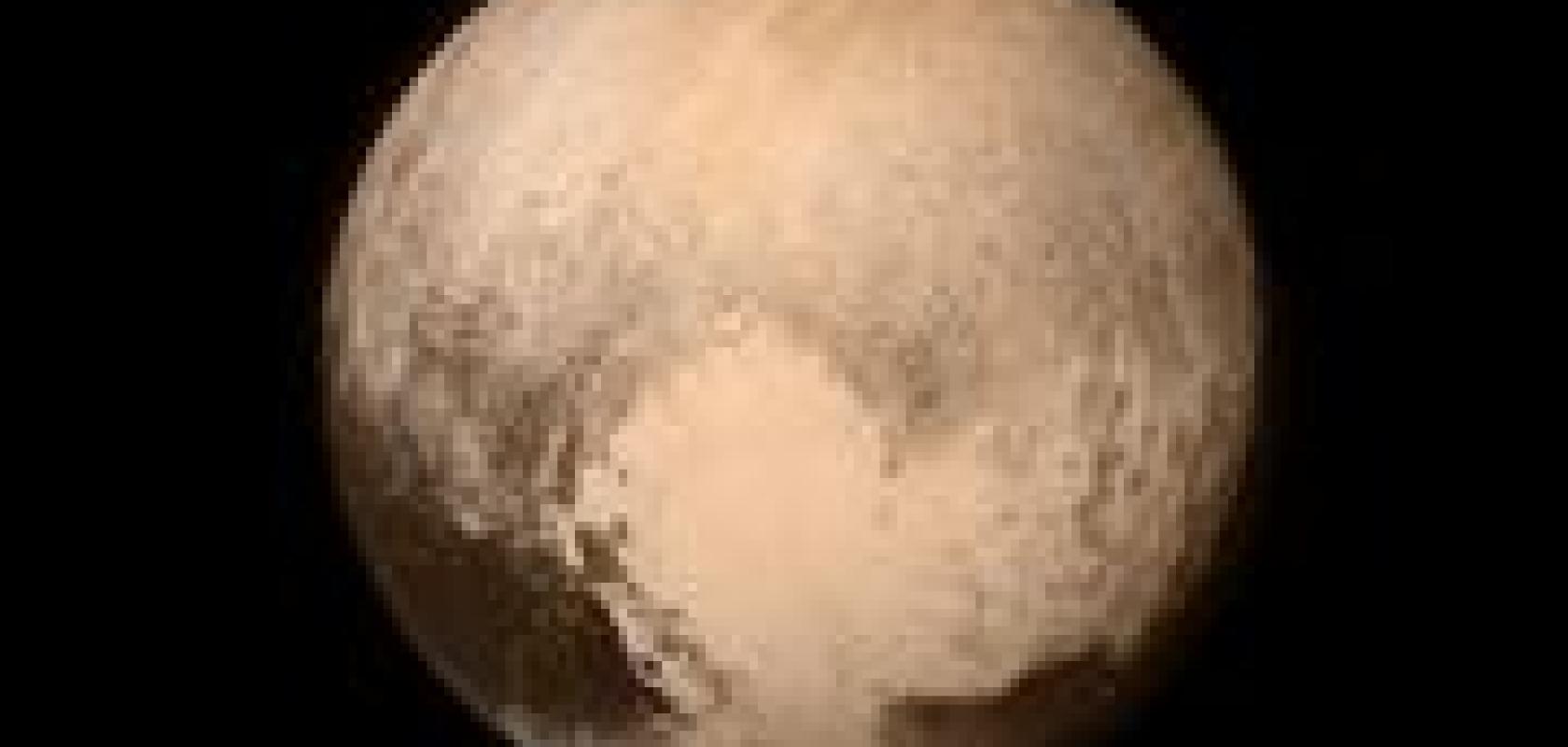After a decade-long journey through the solar system, Nasa's New Horizons spacecraft made the closest ever approach to Pluto on Tuesday 14 July, passing the planet at a whopping 14km per second.
The spacecraft 'phoned home' just before 2am (GMT) this morning, when it started to transmit the first ever close-up images and spectroscopic data of the dwarf planet. This huge collection of data, which could take up 16 months to transmit back to Earth, will allow scientists to investigate its global geology and chemical and atmospheric makeup.
New Horizons took 2 hours 15 minute to pass Pluto, where it obtained images and spectroscopic measurements from Pluto and its moons. The data is currently being transmitted over a distance close to five billion kilometres from Pluto to Earth, and will arrive just after midnight tonight (GMT).
The event follows yesterday’s news regarding Pluto’s size – something that has been debated since the planet’s discovery in 1930. From the data obtained from New Horizons, Nasa was able to confirm that the dwarf planet is 2,370km in diameter, somewhat larger than many prior estimates.
Designed and integrated at Johns Hopkins University's Applied Physics Laboratory (APL) in Laurel, Maryland — with contributions from international companies and institutions — the New Horizons spacecraft is a robust, lightweight observatory designed to withstand the long, difficult journey from the launch pad on Earth to the edge of the solar system.
The payload consists of seven instruments – three optical instruments, two plasma instruments, a dust sensor and a radio science receiver/radiometer – designed to investigate the global geology, surface composition and temperature, and the atmospheric pressure, temperature and escape rate of Pluto and its moons.
The determination of Pluto’s size was made possible by the ‘eagle eyes’ of New Horizons, the Long Range Reconnaissance Imager (Lorri) – a panchromatic high-magnification imager, consisting of a telescope with a 20.8cm aperture that focuses visible light onto a CCD.
Lorri started taking pictures of Pluto around 180 days before its closest approach, when the dwarf planet and its moons still resembled little more than bright dots. During its closest encounter today, Lorri imaged select sections of Pluto's sunlit surface at football-field-size resolution, resolving features at about 50m across.
Lorri has no colour filters or moving parts - the instrument’s silicon carbide construction keeps its mirrors focused through the extreme temperature dips New Horizons experienced on the way to Pluto.
The main ‘eyes’ of New Horizons, Ralph, is a combined infrared spectrometer and imager charged with producing the maps that show what Pluto, its moons, and (potentially) other Kuiper Belt Objects look like.
Ralph consists of three panchromatic and four colour imagers inside its Multispectral Visible Imaging Camera (MVIC), as well as an infrared compositional mapping spectrometer called the Linear Etalon Imaging Spectral Array (LEISA). LEISA is an advanced, miniaturised short-wavelength infrared (1.25-2.50µm) spectrometer provided by scientists from Nasa's Goddard Space Flight Centre.
Ralph’s suite of eight detectors – seven CCDs and an infrared array detector – are fed by a single, sensitive magnifying telescope with a resolution more than 10 times better than the human eye can see. The entire package operates on less than half the wattage of an appliance light bulb.
Ralph will aid the search for clouds and hazes in Pluto’s atmosphere, and for rings and additional satellites around Pluto. At the same time, LEISA will map the amounts of nitrogen, methane, carbon monoxide, and frozen water and other materials, including organic compounds, across the sunlit surfaces of Pluto and its moons.
It will also let scientists map surface temperatures across Pluto and Charon, Pluto's largest moon, by sensing the spectral features of frozen nitrogen, water and carbon monoxide.
Another instrument, Alice, is a UV imaging spectrometer designed to probe the composition and structure of Pluto’s dynamic atmosphere. Alice will also search for an ionosphere around Pluto and an atmosphere around Charon.
Related stories
Lidar laser to be supplied for NASA climate research
Laser interferometer to assist NASA climate research
Further information


